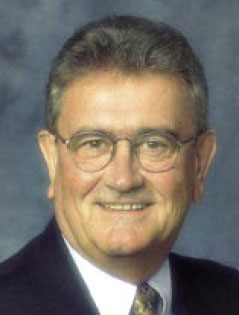[Morris M. Thompson] [Andrew Piscitello] [H. Dell Foster] [Albert Carroll “Mac” McCutchen] [Francis H. Moffitt] [Michael L. Mooney] [Daniel Mostajo] [Chor-Pang (C.P.) Lo] [Ernest “Lyn” Henry] [Alden P. Colvocoresses ] [James L. Clapp]
 Morris M. Thompson 96 a civil engineer who served with the U.S. Geological Survey’s (USGS) Topographic Division for 56 years died of congestive heart failure Jan. 6 at Greenspring Village retirement community in Springfield Virginia where he lived.
Morris M. Thompson 96 a civil engineer who served with the U.S. Geological Survey’s (USGS) Topographic Division for 56 years died of congestive heart failure Jan. 6 at Greenspring Village retirement community in Springfield Virginia where he lived.
He was known in the mapping profession for his work as Atlantic region engineer and as chief of the Office of Research and Technical Standards and as the editor and author of numerous books including Maps for America (1979) which was republished twice.
Thompson was born in Jersey City the fifth of six children of immigrants from Belarus. He was the first in his family to attend college graduating from Princeton University.
In 1939 he joined USGS in Chattanooga Tennessee as a junior engineer on a project to map the Tennessee Valley watershed using aerial photography. During World War II he remained in Tennessee and helped map strategic areas and invasion routes in Europe and Asia for the War Department.
After the war Thompson was assigned to the Office of Research and Technical Control at the Topographic Division’s headquarters in Washington. He helped revamp the methods and equipment used for photogrammetric mapping and was the author and top editor of numerous technical articles concerning these new developments. He received the Interior Department’s Distinguished Service Award in 1967 and retired in 1975.
Throughout his career Thompson was active in several professional societies. As a fellow of the American Society of Civil Engineers he served as chair of the Surveying and Mapping Division and in 1977 received the Society’s Surveying and Mapping Award.
A member of the American Society of Photogrammetry now know as the American Society for Photogrammetry and Remote Sensing for more than 50 years Thompson served as Publications Committee chairman and received awards for authorship and outstanding achievement in photogrammetry. His most notable awards include the Talbert Abrams Award in 1950 the Fairchild Photogrammetric Award in 1965 and his selection as an Honorary Member in 1978.
Thompson was also a board member and past president of Beth El Hebrew Congregation in Alexandria. After moving to Greenspring from Vienna Virginia in 1999 he chaired the Jewish Residents Council from its inception until 2007.
His wife of 68 years Sophia Thompson died in 2004. Survivors include a son Robert Thompson of Atlanta; a sister; and two grandchildren.
From the Washington Post Tuesday January 20 2009; B09 with additions.
Andrew Piscitello (64) died of cancer at his home in Plymouth Wisconsin on Friday August 22 2008. A member of ASPRS for 17 years Piscitello retired from Aero-Metric Inc. in 2007 as Vice President – Production and Chief Photogrammetrist after 35 years of service. He was an ASPRS Certified Photogrammetrist.
His photogrammetric career began with assignments to a U.S.A.F. Reconnaissance Technical Squadron from 1961-1965. In 1969 he joined Aero-Metric and was responsible for managing production and researching new technologies for procedures and equipment. His experience included compilation of digital and graphical data acquired from aerial and terrestrial photography by stereo-photogrammetric restitution of instrumentation of analog analytical and digital design. In addition to his love of photogrammetry Piscitello also enjoyed open wheel racing and he participated in many SCCA amateur race events.
He is survived by his with Joyce; three children Chairmaine Thessien Dayne Piscitello and Scott Piscitello; three stepchildren Tamera Brousseau Darren Struebing and Dean Struebing; four grandchildren and eight step grandchildren; three sisters; and two brothers. A memorial fund in his name has been established with the American Cancer Society and the Sharon S. Richardson Hospice.
H. Dell Foster succumbed to cancer on May 9 2008 at his home in Spring Branch Texas. With his passing the photogrammetric community has lost one of its most creative and prolific members.
Born in Montana Dell became interested in flying while still in school. He began flying as a crop duster then went on to aerial photography. Problems with his camera convinced him that he could build a better one; he was right and thus began a career that greatly affected the course of the field of photogrammetry.
Dell taught himself machining and optics and worked for free as a stereoplotter operator to learn photogrammetry. Some of his first cameras were based on modified war-surplus camera bodies and lenses. From that beginning grew H. Dell Foster Company founded in 1964 and the line of photogrammetric instruments for which Dell became known.
Keuffel & Esser (K&E) bought the H. Dell Foster Company in 1975 and began manufacturing and marketing instruments designed by Dell. These included the DSC-3/80 Analytical Compiler an analytical plotter distinguished by a high-quality zoom optical train and an innovative stage positioning system based on an infrared grid etched on a glass plate instead of the standard linear lead screws or optical encoders thereby eliminating axis non-orthogonality and scale differences.
After leaving K&E Dell founded H. Dell Foster Associates in 1978 to pursue projects in photogrammetry and other fields. These projects included the Maco 35/70 small-format analytical stereoplotter designed to work with uncalibrated amateur 35 and 70 mm cameras and the Vision Metrology System a system of automated theodolites designed for industrial measurement and inspection. Other projects followed his interests in petroleum prospecting archeology and building construction technology.
Dell received the Photogrammetric Award (Fairchild) from ASPRS in 1975 in recognition of his contributions to the field. He received a number of patents and served as a consultant to several government agencies.
Dell is survived by his wife June Foster of Spring Branch; two daughters Cayce Yarbrough of Bulverde and Carolyn Lay of San Antonio; a sister Midge Malsam of Spokane Wash.; and two granddaughters.
Albert Carroll “Mac” McCutchen
July 22 1912 – April 13 2008
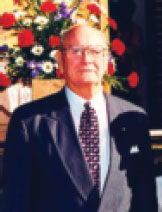 Albert Carroll “Mac” McCutchen (95) and Emeritus Member of ASPRS who joined the Society in 1943 died April 13 2008.
Albert Carroll “Mac” McCutchen (95) and Emeritus Member of ASPRS who joined the Society in 1943 died April 13 2008.
Born on July 22 1912 in Bass Arkansas McCutchen was the youngest of seven children born to Joshua and Mary Alice McCutchen and their only son. He left home at age 13 to live with his sister and brother-in-law in order to attend high school at Arkansas Tech. He also attended college there. McCutchen went to work for the U.S. Geological Survey in 1931 first serving in field parties and mapping the central portion of the country. While working in Little Rock he met Katherine whom he married in 1937.
McCutchen had wide and varied experiences in the Survey. His duties included all phases of topographic mapping both in the field and the Rolla office. This experience led to his selection as Chief of Photogrammetry of the Central region in 1946. In 1969 Robert Lyddan USGS chief topographic engineer appointed him Central Region Engineer succeeding Daniel Kennedy. He served in that position until his retirement in 1976. During his tenure he succeeded in centralizing the Survey from multiple locations into the single building it occupies today.
McCutchen was a registered professional engineer a member of The American Society of Civil Engineers The American Congress of Surveying and Mapping The Missouri Society of Professional Engineers and the National Society of Professional Engineers. He was also selected for membership in the Chi Epsilon Honor Society with Special Honor.
He was instrumental in the conception of the Rolla Chapter of the American Society of Photogrammetry and was one of the charter members when it was organized in 1950. He also served as past president of the Mid-Missouri Section American Society of Civil Engineers.
McCutchen served in various capacities in many local civic organizations and was a member and past president of the Rolla Rotary Club. His accomplishments both civic and professional led to his being listed in “Who’s Who in the Midwest”.
An active Christian McCutchen served in various offices including Sunday School Superintendent Deacon Elder and Chairman of the Elders and Deacons at the First Christian Church and was later a member at the Rolla Church of Christ.
McCutchen was a generous and kind gentleman not only with his family but also a host of friends. He will be greatly missed. Surviving are his daughter Carolyn McCutchen Condict of Willard Missouri and her son Justin Shockley of Springfield Missouri; a son Dr. John W. McCutchen and his wife Suzanne and their daughter Katie of Orlando Florida; nieces nephews and other extended family members.
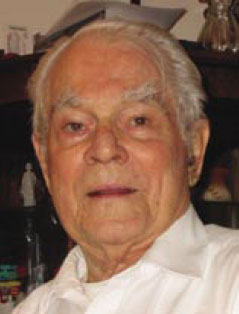 Francis Herbert Moffitt
Francis Herbert Moffitt
October 16 1922 – April 21 2007
Francis “Frank” H. Moffitt (84) passed away peacefully at home in Berkeley California on April 21 2007 following complications from pneumonia. Frank Moffitt professor emeritus of civil engineering at the University of California Berkeley was a prominent figure in the field of surveying and photogrammetry since joining the U.C. faculty in 1951.
Moffitt was very active in the leading professional societies of the surveying and mapping profession and served as President of the American Society for Photogrammetry and Remote Sensing in 1979 National Director for the American Congress on Surveying and Mapping from 1967 to 1970 and President of the Management Association for Private Photogrammetric Surveyors (MAPPS) from 1986 to 1987.
Born and raised in Akron Ohio Moffitt enlisted in the U.S. Army Air Corps just prior to Pearl Harbor and served in Panama during World War II processing images of the war in the Pacific. Following the war he studied surveying and photogrammetry at Syracuse University earning the degrees of Bachelor and Master’s of Civil Engineering in 1949 and 1950 respectively.
During his 36 years as Professor of Civil Engineering at the University of California Berkeley Moffitt authored two textbooks Surveying and Photogrammetry which provided the basic fundamentals to many thousands of civil engineering forestry and remote sensing students throughout the world. He continued his teaching role beyond his university students by teaching short courses for practicing professionals. He was a pioneer in using photogrammetry in multidisciplinary applications such as bioengineering orthodontics structural engineering and fluid mechanics. He was also a pioneer in the use of photogrammetry in accident scenes and often served as subject matter expert in court cases. Moffitt retired in 1987 as a professor emeritus of civil engineering.
Moffitt was proud of his early work surveying for the U.S. Geological Survey the Army Corps of Engineers and the National Park Service. He continued his special relationship with professionals in the field and became active in the MAPPS organization. Some of his fondest memories were those he spent with his professional colleagues.
Frank Moffitt is survived by his wife Mary Kathleen Boni Moffitt of Berkeley California; daughters Mary Elmstrom of Woodland California Eileen Frelier of Three Forks Montana Kathleen Vinci of Richmond California Ann Zacharias of Pittsfield Maine Madeleine Gerdes of Los Altos California and Margaret Goebel of Mountain View California; sons Nicholas Moffitt of Gig Harbor Washington and Anthony Moffitt of Tyler Texas; 16 grandchildren and 8 great-grandchildren.
Inspired by reading through his grandfather’s surveying book Don Zacharias one of Moffitt’s grandsons wrote this poem in 1998 while studying creative writing at Loyola Marymount University.
Moffitt was devoted to his family his church his students and the profession and will be missed by all.
By Dr. George Y.G. Lee
Michael L. Mooney active for 45 years in the mapping industry and until recently the President of HJW GeoSpatial in Oakland California passed away in April 2007.
Mooney grew up in Minot North Dakota and from an early age developed an interest in the outdoors which he retained throughout his life. After studying aeronautical engineering at the Northrop Institute of Technology in southern California Mooney began his working career at Teledyne Geotronics in Long Beach in 1961 as a geodetic computer where he learned the details of surveying and photogrammetric mapping. Subsequently his almost 30-year career at Teledyne led to him managing some of the largest mapping projects ever undertaken by a commercial company throughout Latin America Southeast Asia Africa and the Middle East.
Of particular note is a period of seven years during which Mooney spent living in Thailand where he served as Managing Director of Techdata a subsidiary of Teledyne. Indonesia Chile Algeria and Senegal were only a few of the sites of major mapping projects that he managed. Later in the 1990s with Geonex Mooney served as Project Manager for major mapping contracts in Pakistan introducing softcopy photogrammetry and the digital orthophoto to a brand-new market.
Most recently Mooney held management positions at Airborne Systems (Anaheim California) and at HJW GeoSpatial (formerly Hammon Jensen Wallen and Associates) in Oakland California where as President he was responsible for all management and production operations.
Throughout his career Mooney’s energy and capacity for work focused on successful completion of projects to exacting standards with an eye to constant innovation and improvement of map production techniques. He devoted himself to his work with warmth generosity and compassion towards his fellow workers and was a true gentleman in his dealings with others.
Mooney was a long-time member of ASPRS and is well-known to many colleagues across the country and overseas through his associations over the years.
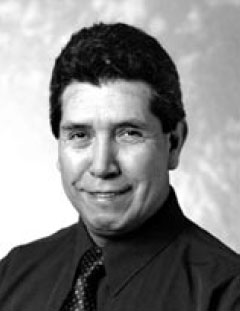 Daniel Mostajo
Daniel Mostajo
June 30 1944-March 26 2007
Daniel Mostajo was born in Bolivia and studied Topography at the Geographic Military Institute in La Paz Bolivia and received his degree in 1964. He continued his education at the Inter American Geodetic Survey Cartographic School in the Canal Zone Panama receiving his certificate of Photogrammetric Edit in 1968. He obtained ASPRS Photogrammetric Certification in 1995.
He immigrated to Minneapolis Minnesota and worked for several photogrammetric engineering firms before relocating to Portland Oregon in 1997. These included Mark Herd and Martinez Corporation where he was Vice President of Photogrammetric Applications. Mostajo worked as Photogrammetry and Aerial Triangulation Manager for Spencer B. Gross in Beaverton Oregon from 1997 to 2001 before working his final years at Bonneville Power Administration (BPA) in Vancouver Washington as a cartographer in the Photogrammetry section. He had over 25 years of photogrammetric experience before retiring in 2005.
Mostajo was a s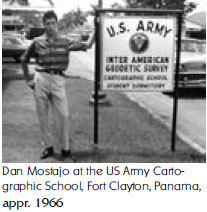 trong advocate of replacing labor intensive photogrammetric data collection methods with more advanced digital photogrammetry systems. He also promoted BPA’s acquisition and utilization of lidar data.
trong advocate of replacing labor intensive photogrammetric data collection methods with more advanced digital photogrammetry systems. He also promoted BPA’s acquisition and utilization of lidar data.
He enjoyed fishing on the Columbia River playing his guitar and spending time with his family and friends. He passed away March 26 2007 after a three-year battle with cancer. Mostajo is survived by his wife Mery; daughter Siboney Hines and her husband Derek of West Linn Oregon; son Nathaniel Mostajo of Bellevue Washington; and five grandchildren.
Chor-Pang (C.P.) Lo (1939-2007)
by Xiaojun Yang PhD
On December 30 2007 Professor Chor-Pang (C.P.) Lo (68) died of lung cancer in Athens Georgia. Born in Hong Kong in 1939 Lo studied geography at the University of Hong Kong where he received BA (First Honors; 1963) and MA (1966) degrees. From 1968-1971 he was a Commonwealth Scholar pursuing his PhD in Geography and Photogrammetry at the University of Glasgow in the UK. Before joining the faculty at the University of Georgia in 1984 he was a Reader at the University of Hong Kong. He was promoted to the rank of Full Professor in 1988.
Lo was an internationally known geographer who made seminal contributions to urban remote sensing and the development of geographic information system approaches for examining human-environment interactions. He pioneered the use of Landsat data for land cover mapping in China in particular the Hong Kong-Pearl River Delta Region. He conducted research on population estimation using aerial photography Large Format Camera photography MSS TM SPOT DMSP-OLS and Shuttle Imaging Radar images for the city of Hong Kong as well as settlements in China and the US. His recent NASA-funded work on land use and heat island effect in Atlanta Georgia attracted considerable attention from the news media. He demonstrated how remote sensing in conjunction with geographic information systems and census statistics can be used to reveal the spatial impact of human societies on the environment and to facilitate our understanding of social processes. Lo’s research was regarded as a major effort to bridge physical social and remote sensing sciences.
A prolific scholar and author Lo wrote numerous publications that appeared in some premier remote sensing geographic information science and geography journals. He also authored or co-authored 11 books including three major textbooks on remote sensing or geographic information systems (Applied Remote Sensing Longman 1986; Concepts and Techniques in Geographic Information Systems Prentice Hall 2002 2007) that have been adopted by many universities in the United States and other countries. At the time of his death he was co-authoring a chapter entitled “Using a Cellular Automaton Model and GIS to Simulate the Spatial Consequences of Different Growth Scenarios in the Atlanta Metropolitan Area” for the ASPRS Manual of GIS. Lo also made significant contributions to remote sensing geographic information science and geographic education. He taught remote sensing and GIS courses at the University of Hong Kong and the University of Georgia for nearly 40 years. At the University of Georgia Lo directed nearly 30 PhD and master’s degree students who themselves became successful academics. His dedication to urban remote sensing and human-environment interactions inspired a new generation of scholars working to better understand the complex dynamic urban environment.
His honors included the William A. Owen Award in Creative Research given by the University of Georgia (2001) the Medal of Outstanding Contributions to the science of Remote Sensing and the discipline of Geography given by the Remote Sensing Specialty Group of the Association of American Geographers (2001) Research Honors Award (2002) and the Lifetime Achievement Award (2005) given by the Southeastern Division of the Association of American Geographers and the Distinguished Service Award given by the China Specialty Group of the Association of American Geographers (2005).
Lo was a member of the American Society for Photogrammetry and Remote Sensing the Association of American Geographers the Remote Sensing Society the British Photogrammetric Society and the Society of Sigma Xi.
Ernest “Lyn” Henry 65 of Branson West Missouri died Sunday November 11 2007 from complications due to an automobile accident on October 29. Henry was born in Salem Arkansas on October 8 1942 then moved with his family to Kansas City in 1950. Following high school he served four years in the Army then made his professional career in the aerial mapping industry as a Certified Photogrammetrist. He began his career with Western Air Maps in Olathe Kansas. Henry joined ASPRS in 1979 and remained a member for 27 years.
From 1988 until his retirement in 2004 Henry worked at Aerial Data Service (ADS) in Tulsa Oklahoma ending his ADS profession as Vice President and General Manager. Henry and his wife Jane enjoyed their few retirement years together first at Beaver Lake Arkansas then at Table Rock Lake Missouri working outdoors traveling and enjoying their seven children and 21 grandchildren.
Henry is survived by numerous family members including: his loving wife Jane of more than 15 years; his father Ernest Henry of Salem Arkansas; one son Brian Henry and daughter-inlaw Kristina of Camdenton Missouri and four granddaughters Morgan Madison Mollie and Mary Henry; brother Randy Henry and wife Mary; sisters Leatrice Ramler and husband Chuck and Peggy Puckett and husband Jerry; numerous nieces and nephews and great nieces and nephews; six stepdaughters Bridget Barney and husband Marshall Kathy Hagen and husband Bill Laura Prather and husband Brant Nancy Rogge and husband Craig Amy Prather and husband Michael and Mary Gastner and husband Shawn; and 17 step-grandchildren.
Alden P. Colvocoresses
1919-2007
Alden P. Colvocoresses 88 one of 25 ASPRS Honorary Members and a Past President (1988) of the Society died March 27 after a stroke. Colvocoresses was a native of Humboldt Arizona and a 1941 mining engineering graduate of the University of Arizona. During his military career he received master’s degrees in geology and civil engineering and a doctorate in geodetic sciences from Ohio State University. A decorated Army colonel and U.S. Geological Survey (USGS) mapmaker who unsuccessfully challenged the federal government for ownership of a duck-hunting island in the Potomac River Dr. Colvocoresses known by many as Colvo served in the Army Corps of Engineers from 1941 to 1968. During World War II he received two Silver Stars one for capturing and destroying a German Mark IV tank in Tunisia and another for escaping from Italian captors in North Africa. He also served in the Korean War and retired after playing a large role in mapping operations during the Vietnam War. His other decorations included the Bronze Star Medal and two Purple Hearts.
He spent the rest of his career working for the USGS national mapping division retiring in 1990. He was a research cartographer on the Landsat satellite program and received two patents for models of remote sensing systems. He also discovered a reef in the Indian Ocean that was subsequently named for him.
Dr. Colvocoresses’s interest in duck hunting and bass fishing led him to an unnamed 3.7-acre island in the Potomac just south of the Woodrow Wilson Bridge. From his reading of USGS maps he thought “Colvo’s Island” was outside National Park Service wildlife refuge boundaries. After he was spotted shooting from the island in the mid-1980s he fought a long battle with the Park Service over ownership. He filed a claim for the island in the Fairfax County assessor’s office and began paying taxes on the land which was largely overrun with water during heavy rains. But an old USGS map was shown to be wrong in not noting the Park Service’s ownership of the island when it acquired Dyke Marsh a wetlands area decades earlier. In 1990 a U.S. District judge fined Dr. Colvocoresses $100 for carrying a firearm in national parkland.
He was a recipient of the Interior Department’s Distinguished Service Award and five times received the ASPRS Presidential Citation for Meritorious Service. In addition he was a former president of Fairfax Bassbusters a fishing group now called Fairfax Bass.
He was a Fairfax resident before moving to Falcons Landing a retirement community in Sterling about a decade ago. His marriage to June Caldwell Colvocoresses ended in divorce. His second wife Katherine Rose Colvocoresses whom he married in 1949 died in 1974.
Survivors include a daughter from his first marriage Colette Wales of Canterbury England; three children from his second marriage Jim Colvocoresses of Little Torch Key Florida Janet Clampitt of Sterling Virginia and Judy Brescia of Lovettsville Virginia; nine grandchildren; and a great-grandson.
Excerpts from The Washington Post Tuesday April 3 2007; Page B07.
James L. Clapp (74) passed away on Saturday March 31 after a long struggle with Alzheimer’s and Parkinson’s disease. Clapp was born on March 14 1933 in Madison Wisconsin to Don and Estelle (Anderson) Clapp. He graduated from West High School in 1950 where he excelled in sports and academics. In 1961 he married Susan Randolph with whom he raised three sons Lee (Judith) Len (Jennifer) and Don. He received a BS in Naval Science and BS MS and PhD degrees in Civil Engineering (1956-64) all from the University of Wisconsin – Madison. He served as a First Lieutenant in the U.S. Marine Corps as an Engineering Company Commander (1956-59) Instructor and Research Assistant at UW-Madison (1959-63) and Assistant Associate and Full Professor of Civil Engineering at the UW (1964-78). Clapp conducted ice-flow studies in Antarctica (1961-62 and 1967-68) for which he was awarded the Congressional Medal for Antarctic Service. He became an Emeritus Professor in 1995.
He and his family moved to Maine in 1978 when he was appointed Dean of the College of Engineering & Science at the University of Maine at Orono (UMO). Following his return to UW-Madison in 1984 he served in a broad range of capacities. He chaired the Department of Civil and Environmental Engineering (1986-90) and also served as the Director of the Center for Land Information Studies.
Clapp engaged in numerous professional service activities during his career. Among these was his appointment by the Governor as Chair of the Wisconsin Land Records Committee (1985-87) whose work became a national model for land information modernization. He also served as President of the American Congress on Surveying and Mapping (ACSM) during 1988-89.
Clapp had a vision and passion for interdisciplinary research and teaching activities during his career at UW and UMO and was a pioneer in remote sensing education and research. He was a member of the first Executive Committee of the interdisciplinary Institute for Environmental Studies (IES today is the Gaylord Nelson Institute of Environmental Studies). He served as Director of the Environmental Monitoring and Data Acquisition Group Institute for Environmental Studies at the UW (1970-78).
An ASPRS Emeritus Member (he joined ASPRS in 1960) Clapp received numerous awards for teaching and research excellence including the Steiger Award for Outstanding Teaching (1968) Polygon Outstanding Teacher UW College of Engineering (1972 1973 1975 1985) New England Section ACSM Outstanding Educator (1977) ACSM National Fennel Award for Outstanding Educator (1981) and ACSM Presidential Citation for Meritorious Service (1987 1989). He also received the “Friends of Land Records” Award from the Wisconsin Land Information Association. Many of the students he taught and mentored have gone on to be highly successful professionals in the area of geospatial information science and engineering.
Clapp was an avid fan of traditional jazz and played “tub bass” and banjo (but would “stop playing for a dollar”). He was also a master garden-composter and wood chopper. He is survived and will be missed by his wife Sue sons sister Jo-Ann Sivley and many nephews and nieces.
Teaching always remained Clapp’s primary love and he has chosen to continue to teach even after death by contributing his body to the UW Medical School.

 H. Dell Foster
H. Dell Foster